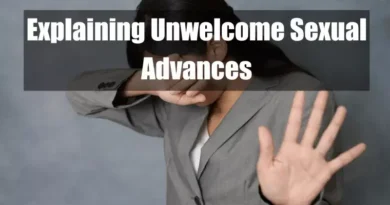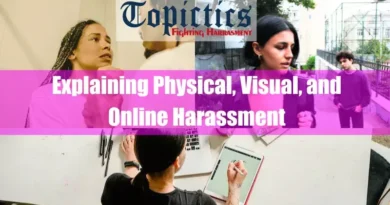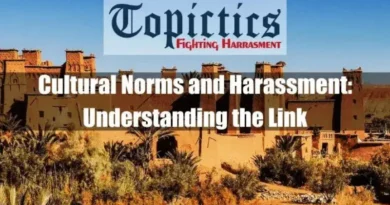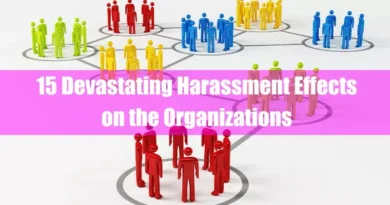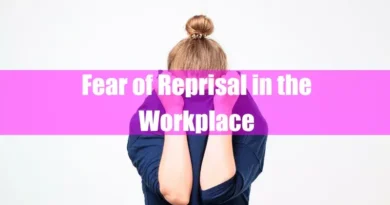Explaining Verbal Harassment or Abuse in Various Settings
Takeaways
| Key Points |
|---|
| Verbal harassment and abuse involve the use of harmful language, such as insults, threats, and manipulation, to demean or control others, often causing profound emotional and psychological harm without visible physical effects. |
| Addressing verbal abuse is vital due to its pervasive impact on mental health, self-esteem, and relationships, and it requires tailored strategies for workplaces, schools, homes, and online spaces. |
| Types of verbal abuse include name-calling, shaming, intimidation, gaslighting, manipulation, ridicule, and the silent treatment, each of which undermines the victim’s autonomy and well-being. |
| These behaviors manifest in various settings, from workplaces with threats and public humiliation to schools with verbal bullying, domestic environments involving controlling dynamics, and online spaces rife with cyberbullying. |
| Recognizing signs of verbal abuse—such as behavioral withdrawal, emotional distress, and physical symptoms like headaches or fatigue—is crucial for intervention and fostering safe, supportive environments through education, policies, and available resources for victims. |
Introduction
Definition of Verbal Harassment and Verbal Abuse
Verbal harassment and verbal abuse refer to the use of words to cause harm to another person. This can include name-calling, threats, insults, and spoken or written communication that demeans, intimidates, or controls the target.
Unlike physical abuse, verbal harassment doesn’t leave visible marks but can have profound emotional and psychological effects.
Importance of Addressing Verbal Abuse
Addressing verbal abuse is crucial because of its pervasive impact on mental health, self-esteem, and overall well-being. Victims of verbal harassment often experience anxiety, depression, and a host of other mental health issues.
By recognizing and addressing these behaviors, we can foster safer environments in workplaces, schools, homes, and online spaces, ensuring everyone can interact without fear of abuse.
Types of Verbal Harassment and Abuse
Name-Calling and Insults
Name-calling and insults are among the most direct forms of verbal abuse. This type of harassment involves using derogatory terms and offensive language to belittle and humiliate the victim. It often targets personal attributes such as appearance, intelligence, or abilities, creating a hostile environment for the victim.
Shaming and Humiliation
Shaming and humiliation aim to make the victim feel ashamed of their actions, appearance, or identity. This form of abuse can occur in public or private settings and is intended to undermine the victim’s self-worth. By continuously shaming someone, the abuser gains control over the victim’s emotions and behaviors.
Threatening and Intimidation
Verbal threats and intimidation involve using words to instill fear and compliance in the victim. Threats can range from physical harm to job loss or social ostracism. Intimidation tactics create an environment of fear, making it difficult for the victim to feel safe or assertive.
Gaslighting
Gaslighting is a manipulative tactic where the abuser makes the victim question their reality, memory, or perceptions. By denying the victim’s experiences and feelings, the abuser gains control, making the victim doubt their sanity. This form of abuse is subtle but highly damaging.
Manipulation
Verbal manipulation involves using deceitful language to control or influence the victim’s actions and decisions. This can include guilt-tripping, twisting facts, or making false promises. The goal is to undermine the victim’s autonomy and make them dependent on the abuser.
Ridicule
Ridicule is making fun of the victim in a way that degrades or diminishes them. This can happen in private or public settings and is intended to embarrass and belittle the victim. Over time, ridicule can erode the victim’s confidence and self-respect.
Withholding Communication (Silent Treatment)
The silent treatment involves deliberately ignoring or refusing to communicate with the victim. This passive-aggressive tactic punishes or controls the victim by making them feel insignificant or unworthy of attention. It can be just as damaging as overt verbal abuse.
Settings of Verbal Harassment and Abuse
Workplace
Common Forms of Workplace Verbal Harassment
In the workplace, verbal harassment can manifest in various forms, including:
- Innuendos and Derogatory Remarks: Subtle comments that demean an individual’s abilities or character.
- Threats and Intimidation: Using fear of job loss or demotion to control an employee.
- Public Humiliation: Criticizing or belittling an employee in front of colleagues.
Impact on Employees and Workplace Environment
Verbal harassment in the workplace leads to a toxic environment, reducing employee morale and productivity. Victims may experience stress, anxiety, and a decline in job performance. A hostile work environment can also increase employee turnover and damage the organization’s reputation.
Legal Considerations and Protections
Various laws protect employees from verbal harassment in the workplace. For instance, Title VII of the Civil Rights Act of 1964 in the United States prohibits employment discrimination based on race, color, religion, sex, or national origin, which includes protection against verbal harassment.
Employers must prevent and address harassment to maintain a safe working environment.
Schools

Identifying Verbal Bullying in Schools
Verbal bullying in schools includes name-calling, teasing, and spreading rumors. It targets students’ vulnerabilities, aiming to isolate and demean them. Teachers and administrators can identify bullying through changes in student behavior, such as withdrawal, anxiety, and declining academic performance.
Effects on Students’ Mental Health and Academic Performance
Students subjected to verbal bullying often experience significant mental health issues, including depression and anxiety. Their academic performance can suffer due to the stress and distraction caused by bullying. This can lead to long-term educational and social difficulties.
Anti-Bullying Policies and Interventions
Schools implement anti-bullying policies to protect students. These policies include clear definitions of bullying, reporting procedures, and consequences for perpetrators.
Interventions often involve counseling for victims and bullies, peer support programs, and educational campaigns promoting respect and empathy.
Domestic Settings
Dynamics of Verbal Abuse in Family and Romantic Relationships

Verbal abuse in domestic settings often involves controlling behaviors, insults, and threats. In family dynamics, it can come from parents, siblings, or extended family members. In romantic relationships, verbal abuse is used to dominate and control the partner, undermining their self-esteem and independence.
Long-term Psychological Effects
The psychological effects of verbal abuse in domestic settings can be profound and long-lasting. Victims may develop chronic anxiety, depression, and post-traumatic stress disorder (PTSD). The abuse can affect their ability to form healthy relationships in the future, leading to isolation and further psychological harm.
Resources for Victims
Victims of domestic verbal abuse have various resources available to them, including hotlines, shelters, and counseling services. Organizations like the National Domestic Violence Hotline provide immediate support and guidance.
Therapy and support groups can help victims recover and regain control of their lives.
Online Environments
Cyberbullying and Online Harassment
Cyberbullying involves using digital platforms to harass or demean someone. This can include sending threatening messages, spreading rumors, or publicly humiliating the victim online. Online harassment is pervasive and can reach victims at all times, making it challenging to escape.
Strategies for Prevention and Intervention
Preventing and addressing online harassment involves educating users about safe online behavior and the consequences of cyberbullying. Platforms should implement robust reporting systems and enforce policies against harassment. Victims can protect themselves by using privacy settings, blocking harassers, and seeking support from trusted individuals.
By exploring the various forms and settings of verbal harassment, we comprehensively understand its impact and the importance of addressing it.
Each setting requires specific strategies and interventions to protect victims and foster safe, respectful environments.
Recognizing the Signs of Verbal Abuse
Behavioral Indicators
Recognizing verbal abuse often starts with observing behavioral changes in the victim. Individuals subjected to verbal harassment might withdraw from social interactions, exhibit reduced enthusiasm for previously enjoyable activities, or become unusually quiet and reserved.
These changes can stem from the fear and anxiety associated with continual verbal attacks. For instance, a person who once participated actively in meetings may start avoiding them or show signs of distress when called upon to speak.
Emotional and Psychological Signs
Verbal abuse can lead to profound emotional and psychological effects. Victims often experience feelings of worthlessness, shame, and guilt. They might display signs of depression, such as persistent sadness, irritability, and loss of interest in daily activities. Anxiety is also common, characterized by constant worry, fear of encountering the abuser, and panic attacks.
Over time, these emotional responses can lead to more severe mental health issues, including post-traumatic stress disorder (PTSD).
Physical Symptoms Associated with Verbal Abuse
The impact of verbal abuse is not limited to emotional and psychological realms. Physical symptoms often accompany the stress and anxiety caused by verbal harassment. Victims may suffer from headaches, stomach issues, fatigue, and sleep disturbances.
Chronic stress can also weaken the immune system, making individuals more susceptible to illnesses. In extreme cases, victims might engage in self-harm or substance abuse as coping mechanisms.
Impact of Verbal Abuse on Mental Health
Effects on Self-Esteem and Self-Worth
Verbal abuse significantly undermines an individual’s self-esteem and self-worth. Persistent negative comments, criticism, and insults can make victims doubt their abilities and value. This erosion of self-confidence can affect all areas of life, including professional performance, relationships, and personal goals.
Victims may internalize the abuser’s derogatory remarks, leading to a diminished sense of self and identity.
Other impacts include depression, anxiety, PTSD, and social withdrawal and isolation.
Strategies for Coping and Responding

Immediate Responses to Verbal Abuse
When faced with verbal abuse, immediate responses can help mitigate its impact. One effective strategy is to calmly but firmly assert boundaries. Statements like “I do not appreciate being spoken to in that manner” can help signal that the behavior is unacceptable.
It’s also important to document instances of abuse, noting dates, times, and specific comments. This documentation can be crucial if legal or organizational interventions become necessary.
Long-term Coping Strategies
Long-term coping strategies involve building resilience and finding healthy outlets for stress. Engaging in activities that boost self-esteem, such as hobbies, exercise, or volunteer work, can help counteract the negative effects of verbal abuse. Mindfulness practices like meditation and yoga can also reduce stress and improve emotional regulation.
Establishing a routine that includes regular self-care can provide stability and a sense of control.
Seeking Support from Friends, Family, and Professionals
Support networks are vital for victims of verbal abuse. Trusted friends and family can offer emotional support, validation, and practical assistance. Professional help from therapists or counselors can provide coping strategies and a safe space to process emotions. Support groups, both online and offline, can connect victims with others who have similar experiences, fostering a sense of community and understanding.
Legal and Organizational Support
Legal and organizational support can be instrumental in addressing verbal abuse. Many workplaces have policies and procedures to handle harassment, including verbal abuse. Reporting the behavior to human resources or a supervisor can trigger an investigation and potential disciplinary actions against the abuser.
In cases where workplace policies are insufficient, legal recourse may be available. Laws such as those enforced by the Equal Employment Opportunity Commission (EEOC) protect employees from harassment and can provide avenues for legal action.
Prevention of Verbal Harassment and Abuse
Education and Awareness Programs
Education and awareness are crucial in preventing verbal harassment and abuse. Programs that teach about the forms and effects of verbal abuse can help individuals recognize and respond to it. These programs should be implemented in schools, workplaces, and community organizations.
By raising awareness, we can foster environments where abuse is less likely to occur and more likely to be addressed promptly.
Fostering Respectful Communication in Various Settings
Promoting respectful communication is essential for preventing verbal abuse. This involves teaching and modeling effective communication skills, such as active listening, empathy, and constructive feedback.
Encouraging open and honest dialogue can help prevent misunderstandings and conflicts from escalating into abuse. Respectful communication should be a core value in all settings, from families to workplaces to online communities.
Policies and Procedures to Prevent Verbal Abuse
Organizations must establish clear policies and procedures to prevent verbal abuse. These should include definitions of unacceptable behavior, reporting mechanisms, and consequences for violations.
Regular training on these policies can help ensure that everyone understands their rights and responsibilities. Effective enforcement of these policies demonstrates a commitment to a safe and respectful environment.
Holding Abusers Accountable
Holding abusers accountable is critical in preventing verbal abuse. This involves consistent enforcement of policies and legal measures against abusers. Accountability also includes supporting victims ensuring they feel safe and heard.
By addressing abuse promptly and effectively, organizations can deter future incidents and promote a culture of respect and safety.
By addressing verbal harassment and abuse through recognition, support, and prevention, we can create environments where individuals feel safe, respected, and valued. This comprehensive approach requires the commitment of individuals, organizations, and communities to make a lasting impact.
Conclusion
Verbal harassment and abuse are pervasive issues that can manifest in various settings, including workplaces, schools, domestic environments, and online spaces. Recognizing the signs of verbal abuse—such as behavioral changes, emotional distress, and physical symptoms—is crucial for early intervention. The impact on mental health can be severe, leading to decreased self-esteem, anxiety, depression, and social isolation.
Effective strategies for coping and responding to verbal abuse include immediate responses like setting boundaries and long-term coping mechanisms such as building resilience and seeking support from trusted individuals and professionals. Legal and organizational support is vital in addressing and preventing verbal harassment.
Preventive measures, including education and awareness programs, fostering respectful communication, and enforcing policies and procedures, are essential to creating safe environments. Holding abusers accountable is critical to deterring future incidents and ensuring victims feel supported.
By sharing real-life case studies and emphasizing the importance of addressing verbal harassment and abuse, we can foster a deeper understanding of its impact and promote actions to create safer, more respectful environments for everyone.
FAQ
What are Microaggressions in verbal harassment?
Microaggressions refer to subtle, often unintended, comments or actions that convey dismissive or derogatory messages toward individuals from marginalized groups. They occur in everyday interactions across various settings and, while seemingly minor, can accumulate over time to significantly impact an individual’s well-being.
What is Gaslighting in the context of verbal abuse?
Gaslighting is a manipulative tactic where the abuser systematically undermines the victim’s perception of reality, making them doubt their own memory or sanity. This form of verbal abuse is commonly observed in personal relationships and can lead to long-lasting psychological harm.
What are Derogatory Slurs in verbal harassment?
Derogatory slurs are explicitly offensive terms used to demean and devalue individuals based on characteristics such as race, gender, or sexual orientation. Their usage reinforces negative stereotypes and contributes to a broader culture of discrimination and exclusion.
What is Verbal Intimidation as a form of abuse?
Verbal intimidation involves deliberately using threatening language, tone, or gestures to instill fear and assert dominance over another person. This abusive behavior is prevalent in both personal and professional environments, where it serves to undermine confidence and enforce power imbalances.
What is Public Humiliation in the context of verbal abuse?
Public humiliation is the act of shaming an individual through degrading or insulting language in a public or group setting. This practice is designed to strip away the target’s dignity and can result in severe emotional distress and social isolation.
What is Cyberbullying as a form of verbal harassment?
Cyberbullying employs digital platforms to send harmful, aggressive, or demeaning messages aimed at intimidating or degrading individuals. The anonymity and rapid dissemination afforded by online communication channels can amplify the impact of such verbal abuse, often leaving long-lasting effects on the victim.
What is Workplace Mobbing in verbal abuse contexts?
Workplace mobbing is a coordinated effort by a group of colleagues or superiors to target an individual through sustained verbal abuse, criticism, and exclusion. This phenomenon creates a hostile work environment, leading to significant psychological distress and professional setbacks for the targeted individual.
What is Hate Speech in the context of verbal harassment?
Hate speech comprises expressions, words, or phrases that promote hatred or violence against specific groups based on attributes like race, religion, or gender. Its use is widely condemned because it not only harms targeted individuals but also fosters a broader atmosphere of intolerance and societal division.
What is Slander in verbal abuse contexts?
Slander involves making false and malicious verbal statements that damage an individual’s reputation. As a legally recognized form of defamation, it can lead to serious personal and professional repercussions, even though it is often employed as a tool of verbal abuse.
What is Sexual Harassment as a form of verbal abuse?
Sexual harassment refers to unwelcome verbal comments, advances, or jokes of a sexual nature that create a hostile or intimidating environment. This form of abuse frequently occurs in workplaces and educational settings, undermining the dignity and security of the individuals affected.
What is Racial Harassment in verbal abuse contexts?
Racial harassment involves the use of derogatory language, slurs, or stereotypes aimed at demeaning individuals based on their racial or ethnic background. Such verbal abuse not only inflicts emotional harm on the target but also perpetuates systemic biases and social inequities.
What is Gender-Based Harassment in terms of verbal abuse?
Gender-based harassment comprises discriminatory or demeaning remarks directed at individuals based on their gender identity or expression. This abusive behavior reinforces harmful gender norms and contributes to an environment where individuals feel marginalized or unsafe.
What is Emotional Abuse through verbal means?
Emotional abuse through verbal means involves the systematic use of degrading or manipulative language to control, isolate, or undermine an individual’s self-worth. This form of abuse is particularly insidious because its effects accumulate over time, often resulting in profound psychological trauma.
What is Coercive Control in verbal abuse contexts?
Coercive control is a pattern of behavior that utilizes verbal threats, manipulation, and isolation to dominate and restrict an individual’s autonomy. This sustained abuse erodes the victim’s ability to make independent decisions and maintain healthy relationships, often leading to long-term emotional damage.
What are Ad Hominem Attacks in verbal harassment?
Ad hominem attacks target an individual’s character or attributes rather than addressing the substance of their argument. This rhetorical tactic is frequently used to divert attention from legitimate issues and can serve as a powerful tool for verbal degradation and personal discredit.




